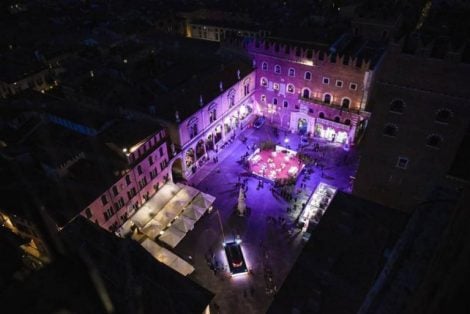A new rice, a new territory, a new method of production—where else has the Asian-origin grain ever been cultivated in Campania? This is happening at Hera nei Campi, an emerging company in the sector with a history made up of many stories. The story of an exclusive giant rice grain, larger than the biggest risotto rices, twice the size of Carnaroli. The story of the Sele Plain, historically synonymous with buffalo farming, rediscovering its tradition of rice—the “food of the gods”—after 200 years. And the story of an innovative technique, using dry cultivation in cold greenhouses instead of open fields, applied for the first time to rice production. A breakthrough in a sector that has long battled climate unpredictability, forcing rice farmers to experiment with alternative cultivation techniques.
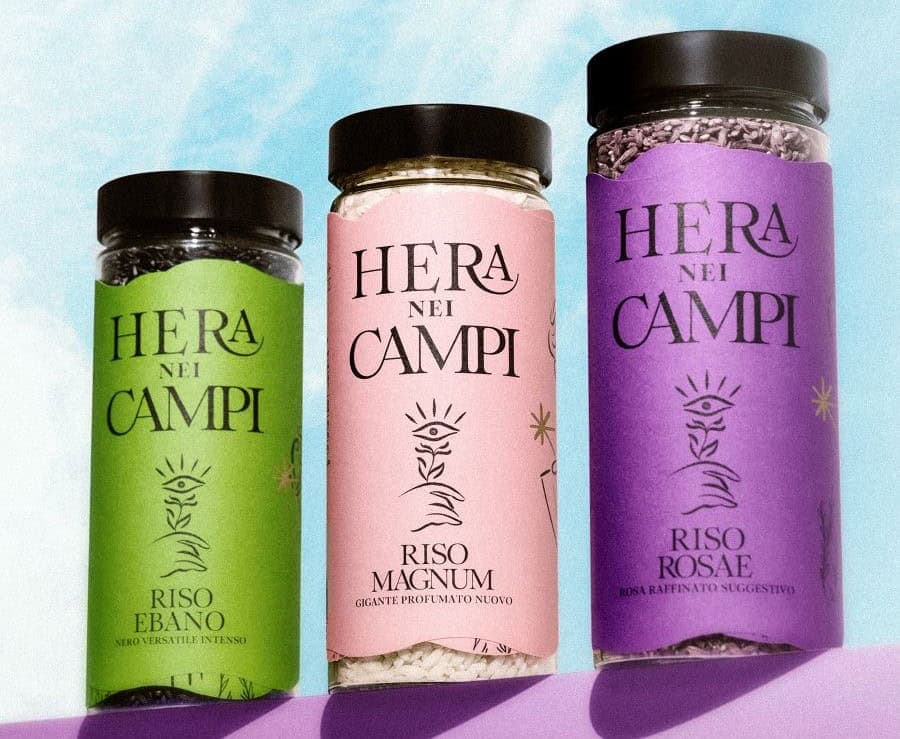
Rice cultivation in the Sele Plain
The Sele Plain, a vast stretch of land in Salerno extending from Pontecagnano to Paestum, is now renowned for buffalo farming and the production of Mozzarella di Bufala Campana DOP. However, up until 200 years ago, rice was cultivated here.
"A Bourbon edict from 1820 banned its cultivation," explains Giovanni Paolo Iacomino, export and marketing manager of Hera nei Campi. The decree, issued due to malaria concerns that endangered farmers' health, put an end to rice paddies, leading to land reclamation and the disappearance of rice farming in this part of Campania.
In this once marshy region, the combination of water, soil, and a mild climate had produced high-quality rice for centuries, dating back to the 15th century. Poets like Giovanni Battista del Tufo and chefs Bartolomeo Scappi and Antonio Latini mentioned it between the 16th and 17th centuries. Evidence remains in local toponymy (Via Terre Risaie in Salerno) and in traditional cuisine.
“The Pastiera di Riso, made with rice instead of wheat, and Sartù di Riso, which actually has Salerno origins, are examples of this legacy,” notes Jessica Di Mauro, sales and marketing expert at Hera nei Campi.
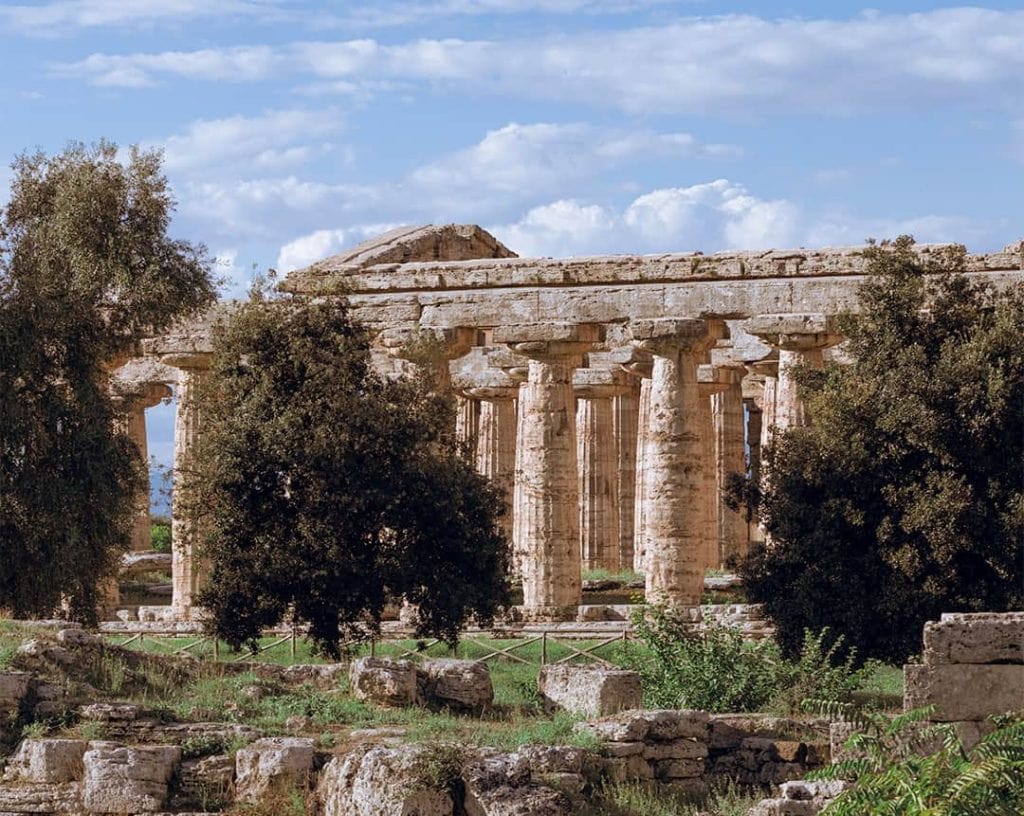
Hera's Temple in Paestum (SA)
The birth of Hera dei Campi
Two centuries later, rice cultivation returns to the Principality of Salerno thanks to collaboration between experts, agricultural enterprises, agronomy institutes, and academics. The key players behind the project include:
- Ellebi, a rice selection company founded in 1980 by Luigi Bifulco, who always dreamed of establishing a rice sector in Campania before his untimely passing.
- Agronomists Giampaolo Raimondi and Emilio Di Stasio.
- The Department of Agriculture at the University of Naples Federico II, based at the Royal Palace of Portici (NA).
- The university’s Torre Lama Agricultural Farm in Bellizzi (SA), where the first experimental open-field cultivations took place in 2021 and 2022.
The first harvest was completed in 2023, the same year Hera dei Campi was officially born—a brand under Ellebi. Its name, logo, and packaging are inspired by Magna Graecia and Hera, wife of Zeus and goddess of prosperity, to whom several temples in the Paestum area (ancient Poseidonia) are dedicated.
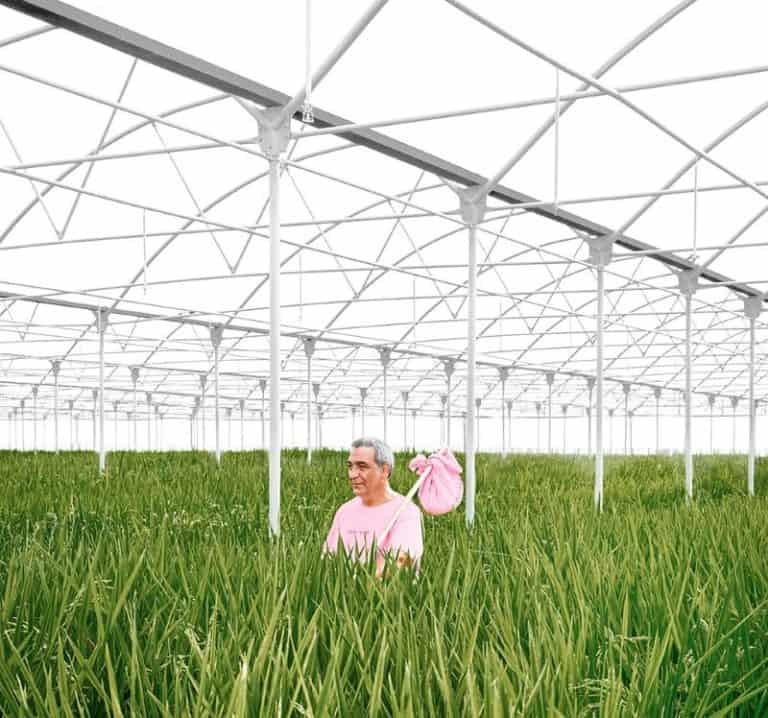
Cold greenhouses and circular economy
This project is revolutionary both in terms of rice varieties and cultivation techniques, which have never before been applied to rice farming.
The agricultural businesses involved—currently 4 to 5—specialise in fourth-range greenhouse farming and follow strict protocols established by the experimental research station.
“Cultivation takes place in cold greenhouses,” explains Giovanni Paolo Iacomino. “These retain the warmth they generate naturally—no flooded fields, just precision drip irrigation to prevent water waste.”
The greenhouse protects crops from increasingly unpredictable weather conditions while enabling a circular economy.
“We’re talking about complementary rotational agriculture,” adds Jessica Di Mauro. “From November to March, leafy vegetables are grown, harvested, washed, and packed for distribution across Europe. From April to October, rice is planted, fitting perfectly into the crop rotation cycle—it absorbs soil nitrates, while rice husks and straw are left in the greenhouse fields as natural fertiliser.”
The benefits? Increased production efficiency, reduced environmental impact, better nutrient absorption from the soil, a faster plant growth cycle, an earlier harvest compared to traditional methods, and protection from extreme weather events.
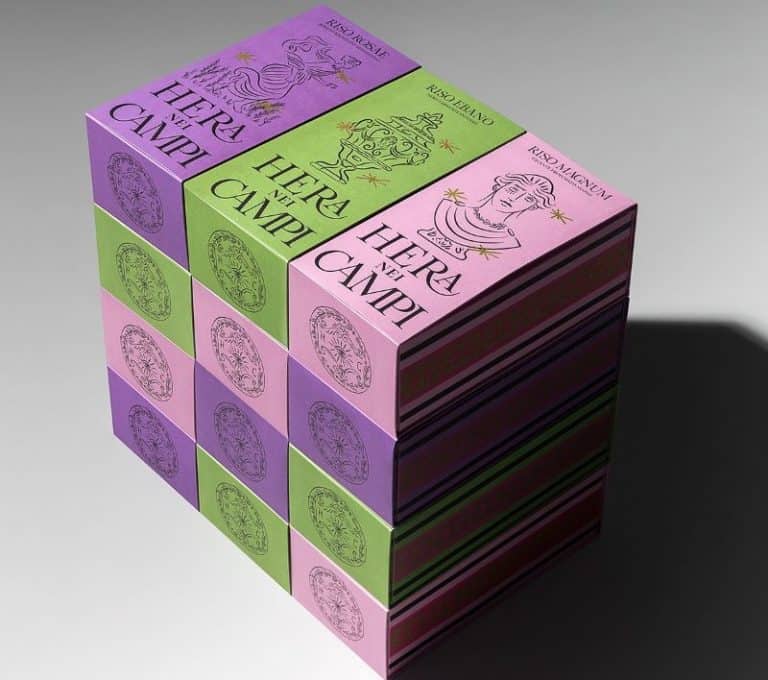
Magnum, Ebano, and Rosae rice
Among the Hera dei Campi rice varieties, the flagship product is the exclusive Magnum (pink packaging), which won Platinum at the Merano Wine Festival in 2023. This is a brand-new variety with an XXL grain—compare it to a Carnaroli.
It was created by crossing an Italian risotto rice with an aromatic Asian variety.
“Arborio, typically cultivated in northern Italy, was grafted with Jasmine, a long-grain rice from Thailand,” explains Di Mauro. “The grain’s much larger size is due to the unique characteristics of this region—mild climate, higher temperatures, and distinct soil properties that influence plant growth. Same varieties, different results.”

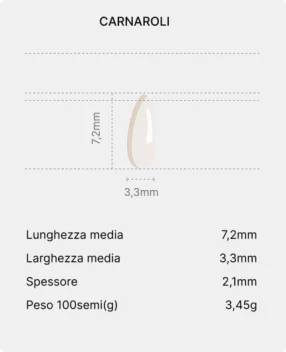
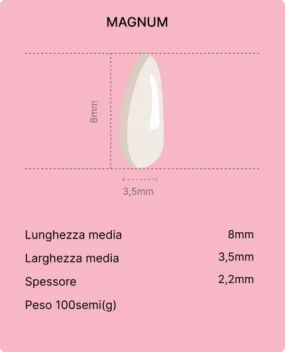
Comparing the rice varieties:
- Ebano (green packaging), an acronym for Early Black Aromatic NOvelty, is a naturally fragrant wholegrain black rice with smaller grains than Venere. It is a late-sown variety (the only one that can be planted as late as June), making it ideal for low-impact farming.
- Rosae (cyclamen-coloured packaging) is derived from Ebano, using stone milling to produce grey-violet grains. When cooked with an acidic ingredient, it turns pink.
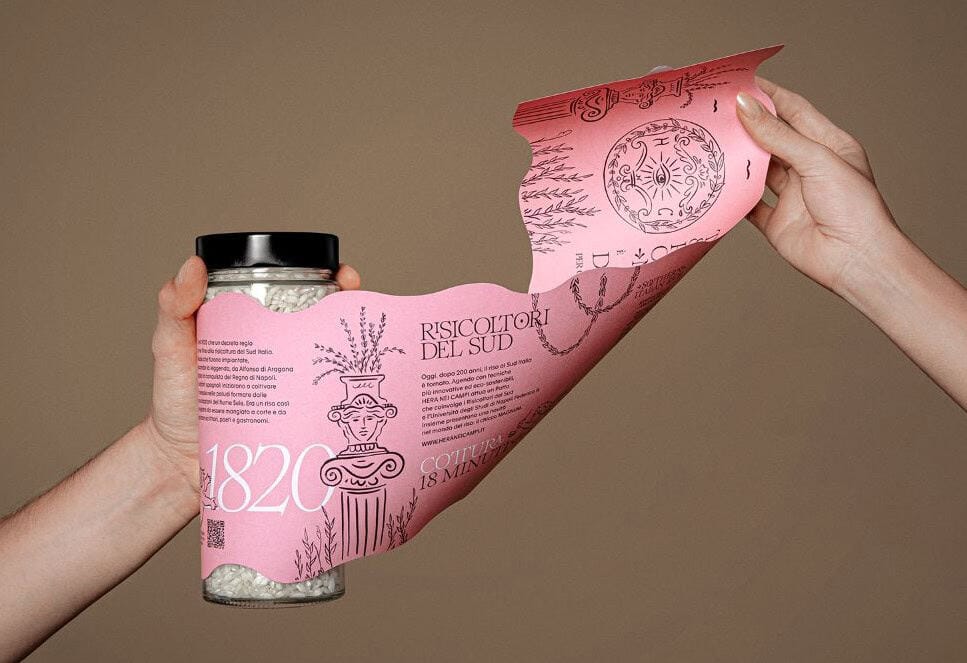
The packaging, inspired by the worlds of fashion and architecture, is designed for high-end markets. Products are available in the normal trade range (boxed or glass containers with capsule covers) and in food service formats (aluminium and bulk sizes).

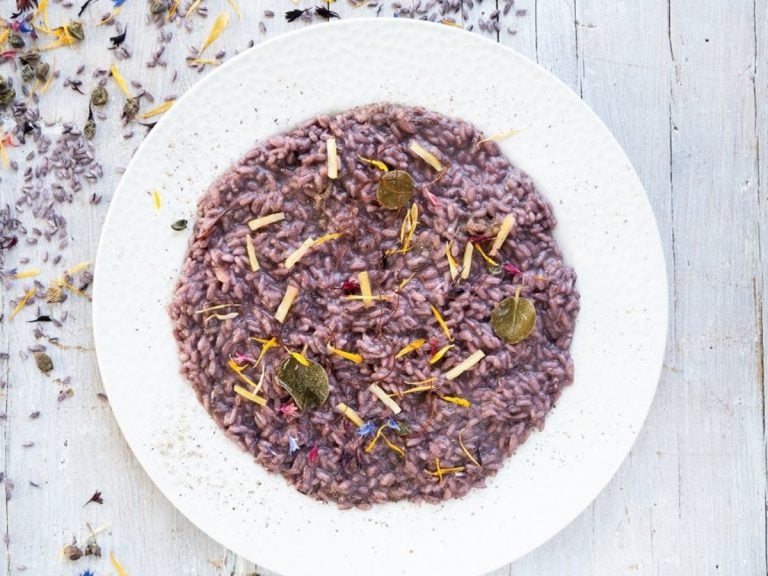
 "From 2nd April, US tariffs between 10% and 25% on wine as well." The announcement from the Wine Trade Alliance
"From 2nd April, US tariffs between 10% and 25% on wine as well." The announcement from the Wine Trade Alliance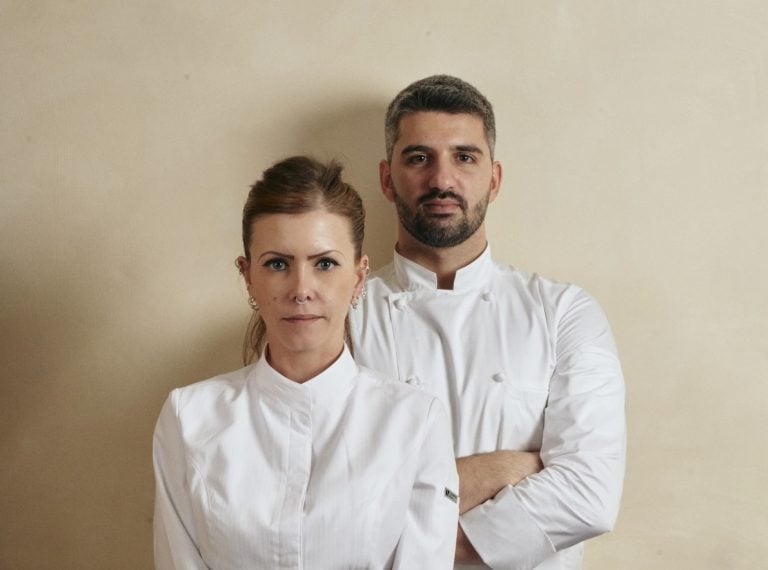 Michelin surprise: in France, the guide rewards Italian chefs
Michelin surprise: in France, the guide rewards Italian chefs Vinitaly 2025: "Piwi should not be included in the DOCs. Dealcoholised wines? I have changed my mind." Angelo Gaja's position
Vinitaly 2025: "Piwi should not be included in the DOCs. Dealcoholised wines? I have changed my mind." Angelo Gaja's position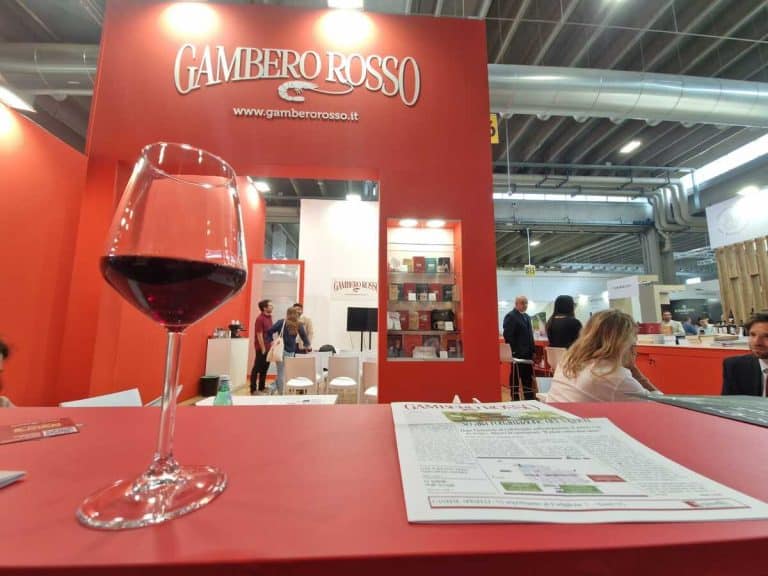 Vinitaly 2025: here are all the events by Gambero Rosso. Tre Bicchieri, debates, TV and much more...
Vinitaly 2025: here are all the events by Gambero Rosso. Tre Bicchieri, debates, TV and much more...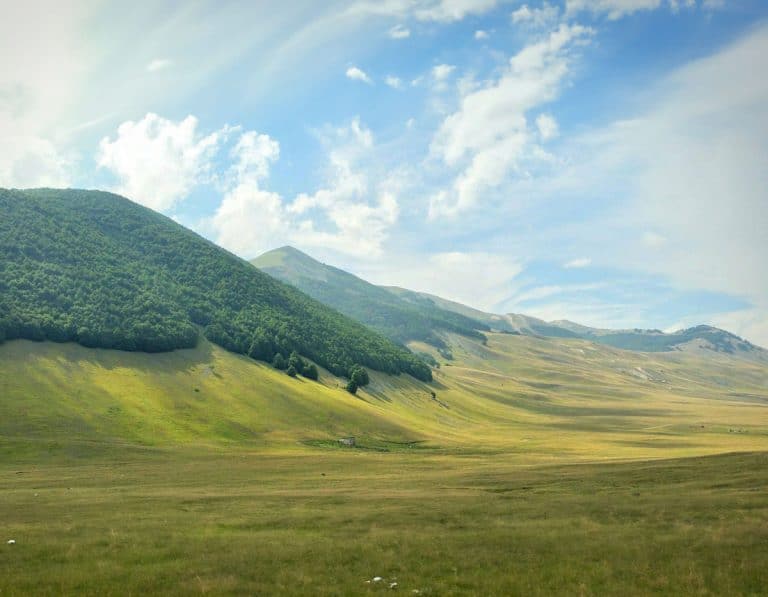 Where to eat in the Majella park, amidst stunning landscapes and authentic cuisine
Where to eat in the Majella park, amidst stunning landscapes and authentic cuisine


